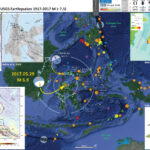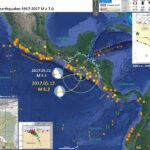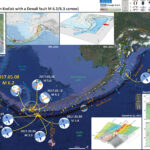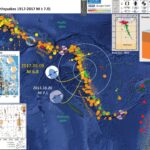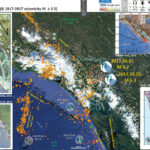There was a series of earthquakes in Sulawesi, Indonesia earlier today, with a mainshock having a magnitude of M 6.8. This series of earthquakes is interesting as it does not occur on the main plate boundary fault, but on upper…
Earthquake Report: El Salvador
There were a couple interesting earthquakes offshore of El Salvador “today.” These earthquakes occurred along the Middle America Trench, a low spot in the ocean formed by the subduction of the Cocos plate beneath the Caribbean plate (a convergent plate…
Earthquake Report: Aleutian Trench
Well, well, well. What have we here. We have some earthquakes that are related to each other and some earthquakes that are not. Less than 2 weeks ago there initiated a sequence of earthquakes along a fault splaying off of…
Earthquake Report: Vanuatu!
There was an earthquake along the New Hebrides Trench this morning (my time in northern California). This earthquake is located deep, possibly below the subduction zone megathrust (but probably is a subduction zone earthquake). The hypocentral depth is 169 km,…
Earthquake Report: Denali fault, British Columbia
This is an interesting earthquake for a number of reasons. The epicenters of the largest earthquakes in this series (M 6.2 and M 6.3) align just off-strike from the Dalton section of the Denali fault (DF) which was mapped as…

